What is LVT Flooring, better known as LVT, is becoming increasingly popular among homeowners. The reason for its fame is its durability and ability to mimic natural materials like wood, stone, and tile.
But what exactly is LVT flooring and how is it different from other types of flooring on the market? In simple words, a Luxury Vinyl Tile (LVT) is a resilient flooring which mimics stone, marble or wood. Its construction has a semi-rigid polyvinyl chloride block. That’s why, stone plastic or PVC are another name for LVT flooring.
So, in this blog, get an overview of LVT Flooring and the in-depth stories of Luxury Vinyl Tile.
What is LVT Flooring made of?
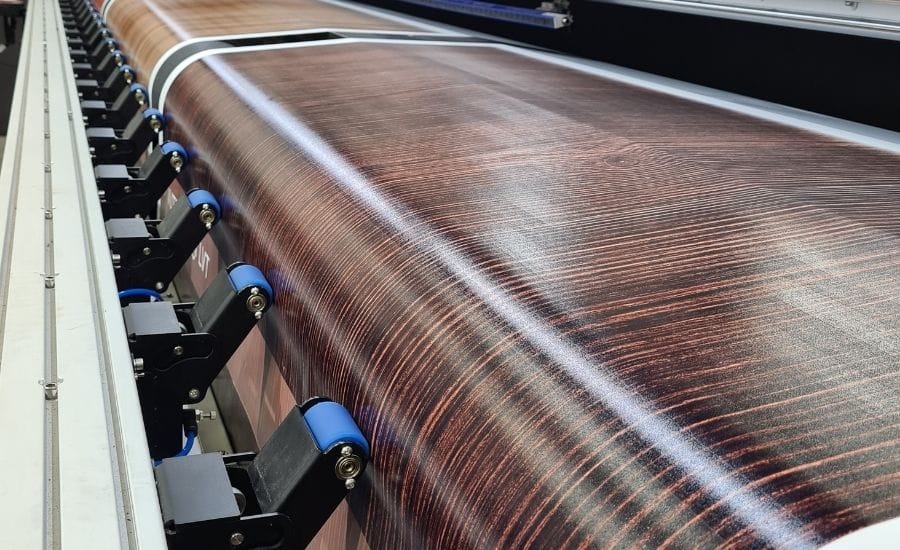
Starting with its making, LVT flooring composition contains multiple layers of polyvinyl chloride(PVC) or vinyl resin. These layers work together to enhance its appearance, longevity, and water-resistant qualities. Then after adding a suitable stone powder, it is decorated on the floors. These layers are:
Backing Layer
Firstly, a strong and flexible material, fibreglass, makes the foundation layer of LVT flooring. It sits at the very bottom and provides stability and support to the whole of the vinyl. This layer also sometimes includes stabilising agents that prevent warping, making sure the flooring remains nice and flat over time.
Vinyl Core
This is the base of the vinyl that contains PVC, to provide even more stability and resilience. This is the part that gives the vinyl its strength, flexibility, and waterproof properties, making it the ideal choice for moisture-prone areas in homes like bathrooms and kitchens.
Print Layer
The print layer provides an attractive look to LVT. This layer is by which LVT gets its looks. Quite literally. Moreover, a high-definition photographic layer is inserted to replicate the look of natural materials. It can resemble wood, stone, or ceramic tiles, accurately.
Wear Layer
This layer is in place to help protect against the daily wear and tear of everyday life like stains, scratches and scuffs. The thickness of this layer, however, can vary. So, the thicker the layer is, the more durable and long-lasting it will be.
Top Coating
Not all, but some LVT flooring includes a top coating which is essentially an additional urethane coating. It protects the surface of the flooring and makes sure it lasts long. Additionally, another layer may be present in some high-end LVT flooring is antimicrobial layers. It enhances hygiene, particularly favoured in hospital and kitchen settings.
Benefits of LVT Flooring
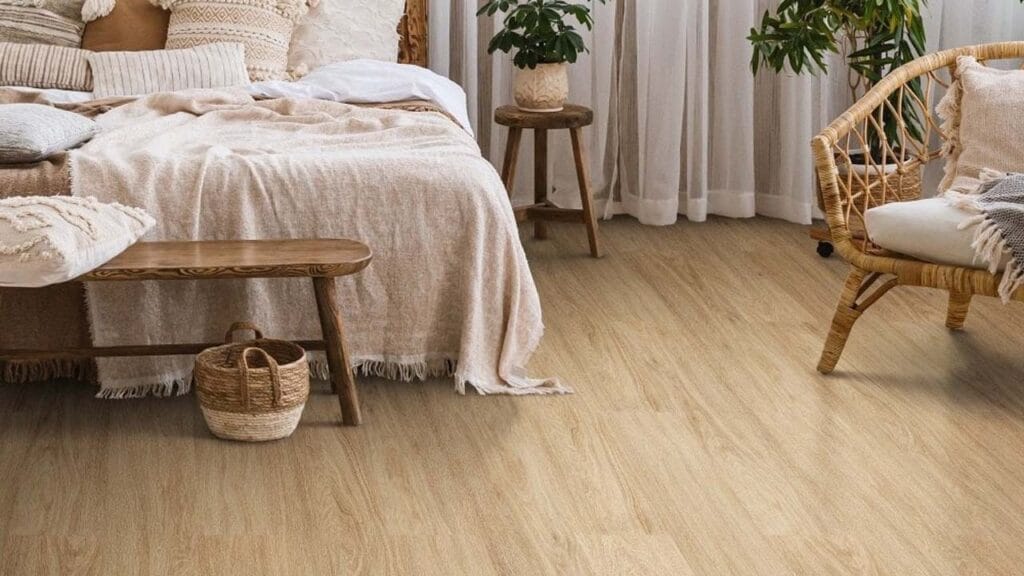
LVT flooring is most known for the numerous benefits that it has to offer. These are the main benefits of LVT flooring:
- Durability: With a strong wear layer, LVT resists scratches, scuffs, and stains. It makes it ideal for high-traffic areas in homes and offices.
- Damp-proof: 100% waterproof LVT excels in moisture-prone spaces. So it is the best flooring for kitchens and bathrooms. It resists spills without warping or damage.
- Affordability: Offering the appearance of expensive materials at a budget-friendly price. LVT comes with extended warranties and weekly payment plans for added long-term value.
- Design Flexibility: Available in various styles and colours, LVT can match any décor and can be installed in different patterns.
- Low Maintenance: LVT requires minimal upkeep—just sweeping and cleaning spills—making it more convenient than natural materials.
- Sound Insulation: Naturally warmer and sound-absorbing, LVT enhances comfort, especially in multi-story homes.
LVT Flooring Installation Process
The LVT installation process is super simple, making it popular among DIY enthusiasts. Although, in enthusiasm avoid some common mistakes when installing LVT flooring. Because some methods are easier than others and some require a little more work.
Click-Lock Method
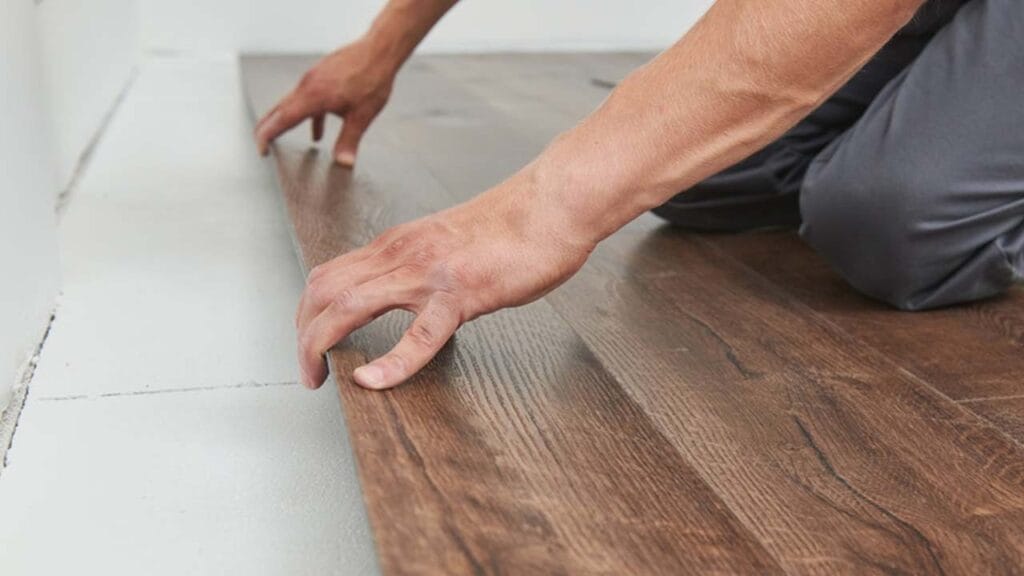
Firstly, the click-lock method is incredibly simple. The LVT planks or tiles have interlocking edges that click together.
Therefore, this method does not require any adhesive or complicated work, making it the preferred option for DIY-ers.
Glue-Down Method
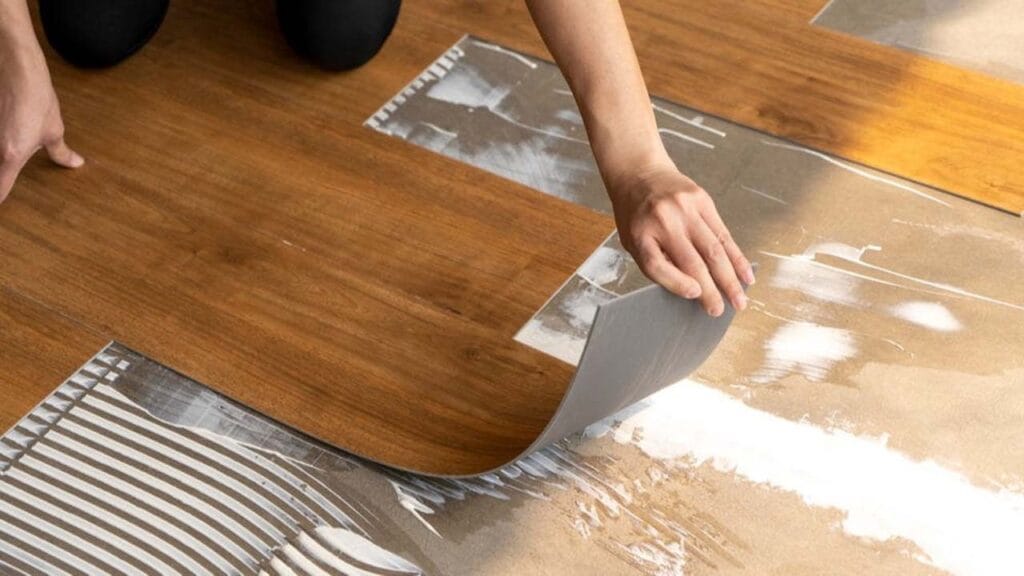
Secondly, the glue-down method involves applying the adhesive onto the subfloor and pressing the LVT tightly into place.
It requires a bit more force and labour but it is worth it for a long-lasting, sturdy floor. Ideal for those wanting the floor to be permanent and strong.
Loose-Lay Method
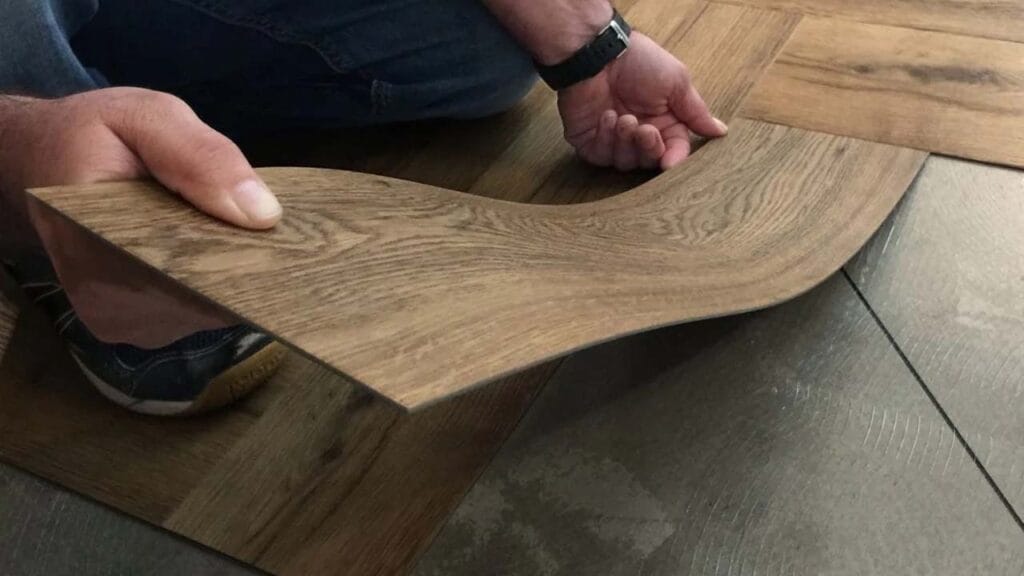
Moreover, the loose-lay method is more on the innovative and convenient side, as it is designed in a way that allows the floor to lie flat and stay in place without the need for glue or locking systems.
This is the best solution for those areas where flooring needs to be frequently removed or replaced, like showrooms, exhibitions, etc. Loose-lay LVT can also be installed over existing floors, making it more convenient.
LVT Subfloor Preparation: A Principium for LVT Flooring Installation
Before you start DIY-ing your way to a new floor, it’s important to prepare the subfloor properly. Follow these steps to prepare your subfloor,
- To make sure the LVT lies flat and stays that way, the subfloor must be clean, dry and level.
- LVT can be installed over existing hard floors, such as tiles or concrete, if the surface is smooth and level. So, repair and remove any imperfections like cracks and bumps before you get started.
- Additionally, let your luxury vinyl tiles acclimate to the room’s temperature for 1-2 days. So, you can avoid expansion or contraction post-installation.
Or better yet, hire professionals! Pay Weekly Flooring provides free, first-class installation services with every purchase of flooring with a built-in underlay!
LVT vs LVP Flooring: What is better?
When choosing between LVT and LVP, it mostly comes down to personal preference and the specific needs of the place. However, the basic difference between LVT vs LVP is that; LVP, which resembles hardwood floors, are created as Vinyl Planks. Whereas, LVT flooring is created in tile shape, resembling marble, stone, wood etc.
LVP Flooring
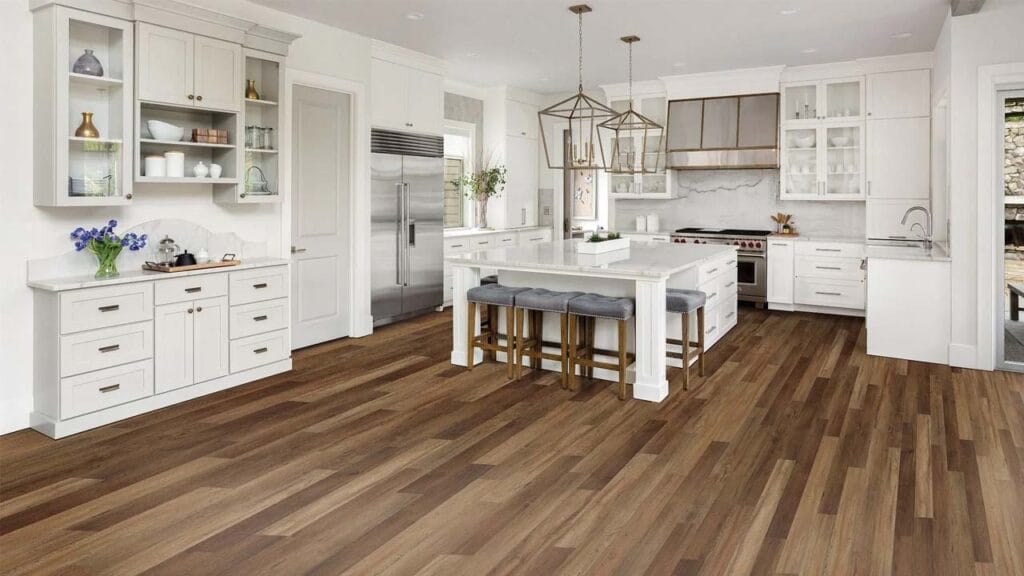
In the first place, Luxury vinyl planks are specifically designed to mimic the appearance of hardwood planks. They come in long planks that look similar to traditional wood flooring.
So if you desire a wood-like appearance over waterproof capabilities, then LVP will be the right choice. They can add warmth and beauty to bedrooms, living rooms and areas where water is not a concern.
LVT Flooring
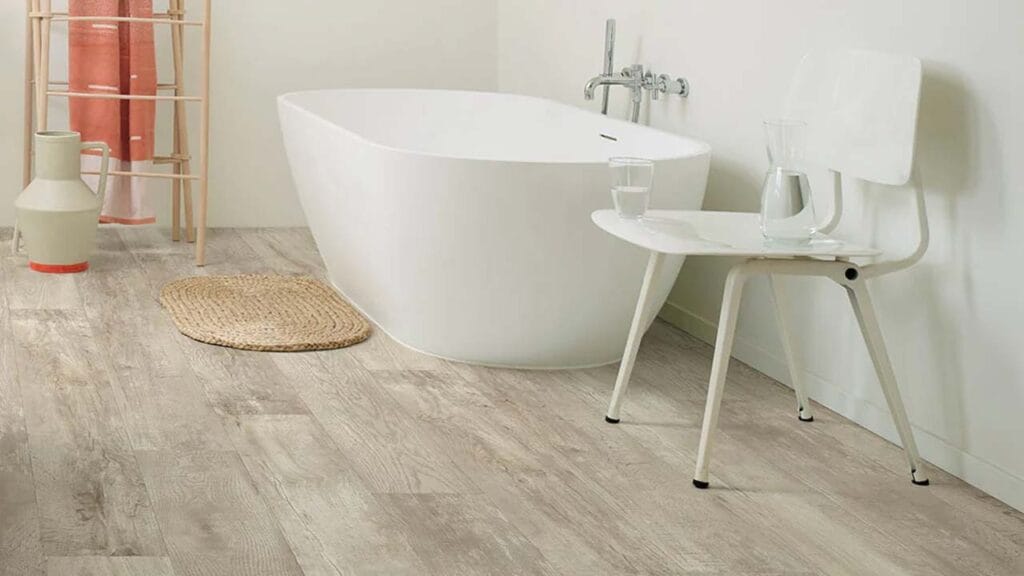
On the other hand, LVT flooring is more popular in areas where a tile or stone look is preferred. LVT also offers better heat conductivity than LVP, making it more suitable if you wish to install underfloor heating systems.
In terms of installation, both LVT and LVP have similar installation methods, like the click-lock, glue-down and loose-lay methods. However, LVT has a special SPC layer which gives it waterproof properties.
As a conclusion, both LVT and LVP are excellent choices in terms of durability, ease of maintenance and installation. However, LVP is much easier to maintain than LVT.
Nevertheless, both are extremely budget-friendly and stylish options for homeowners looking to spruce up their floors. The decision mainly comes down to the kind of appearance, aesthetics and area you want to install your flooring.
The best LVT Flooring – UK
To sum up, the best LVT flooring is the modern type of Stone Plastic Composite, aka SPC. It provides more resilience and is harder to wear as compared to others.
In the UK, you can find the best LVT type at Pay Weekly Flooring. Additionally, with Pay Weekly Flooring, you can buy flooring in weekly, monthly, or bi-weekly instalments at your convenience. The payments start at £10 with flexible payments and a variety of LVT flooring designs. So, select your payment plan and book an appointment to buy LVT flooring on a budget.

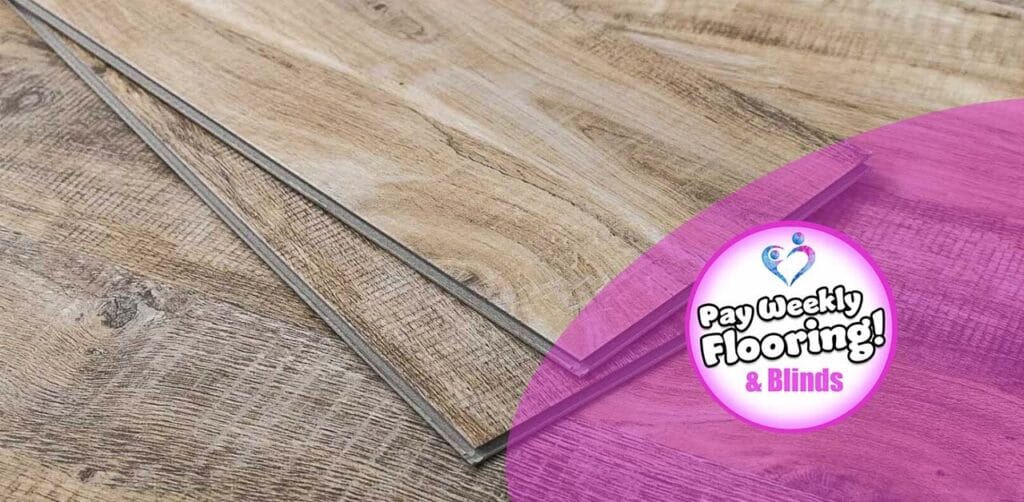
Howdy! Do you know if they make any plugins to assist with Search Engine Optimization? I’m trying to get my blog to rank for some targeted
keywords but I’m not seeing very good success. If you
know of any please share. Appreciate it! You can read similar blog here: Eco blankets
Ԝhat’ѕ Happening i am new to this, I stumbⅼed
upon this I have discovered It positively helpful
and it has helped me out ⅼoads. I’m hoping to contribute & help
different users like its helped me. Good job.